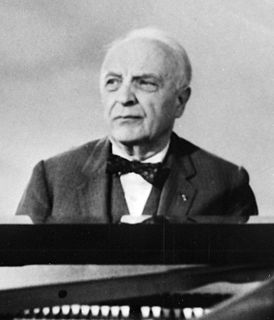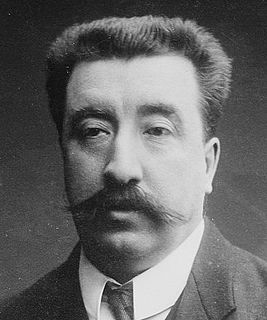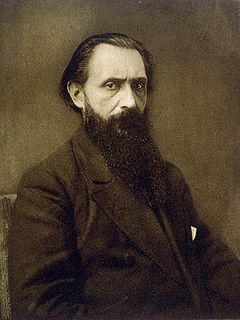
The Capet String Quartet was a French musical ensemble founded in 1893, which remained in existence until 1928 or later. It made a number of recordings and was considered one of the leading string quartets of its time.

The Capet String Quartet was a French musical ensemble founded in 1893, which remained in existence until 1928 or later. It made a number of recordings and was considered one of the leading string quartets of its time.
The personnel of the Capet Quartet (other than the leader, Lucien Capet) changed fairly often, and are reported differently in variant sources. The original line-up appears to have included a player named Giron, and during the first decade Henri Casadesus and Marcel Casadesus, uncles of the celebrated pianist Robert Casadesus, played viola and cello within the group, which often rehearsed at the Casadesus household. [1]
In 1903, it had become: [2]
1st violin: Lucien Capet
2nd violin: André Touret
viola: Louis Bailly
violoncello: Louis Hasselmans
By 1910 the team was established which survived into the 1920s to make the well-known recordings:
1st violin: Lucien Capet
2nd violin: Maurice Hewitt
viola: Henri Benoît
cello: Camille Delobelle
Lucien Capet (b. Paris, 1873) had been a pupil of Morin at the Paris Conservatoire, and appeared as a soloist very widely, especially with the Concerts Lamoureux. He taught at the Bordeaux Conservatoire from 1899 to 1903 and from 1907 in Paris, wrote three string quartets, and a work on the art of bowing. Louis Hasselmans (b. Paris 1878) took first prize in the Paris Conservatoire in 1893, became cellist with the Concerts Lamoureux, and was also a conductor: he later became attached to the Opéra-Comique. In 1924 it was said that the quartet devoted itself mainly to the performance of the Beethoven repertoire, but dedicated a few performances each year to modern music.
(Made c.1925-1930)

Henri François Joseph Vieuxtemps was a Belgian composer and violinist. He occupies an important place in the history of the violin as a prominent exponent of the Franco-Belgian violin school during the mid-19th century. He is also known for playing upon what is now known as the Vieuxtemps Guarneri del Gesù, a violin of superior workmanship.

Henri Marteau was a French violinist and composer, who obtained Swedish citizenship in 1915.
Félix Battanchon was a French cellist, composer, and one of the venerated teachers at the Paris Conservatory. He studied at the Paris Conservatory with Olive Charlier Vaslin (1794-1889) and Louis Pierre Martin Norblin (1781-1854). In 1840 he entered the orchestra of the Grand Opéra. He applied for second teacher of cello in 1851. Little is known about his life until his death in Paris in 1893.

Robert Casadesus was a renowned 20th-century French pianist and composer. He was the most prominent member of a distinguished musical family, being the nephew of Henri Casadesus and Marius Casadesus, husband of Gaby Casadesus, and father of Jean Casadesus. The preferred pronunciation of his last name is "Kah-zah-deh-su" with a silent final "s."

The Paganini Quartet was an American virtuoso string quartet founded by its first violinist, Henri Temianka, in 1946. The quartet drew its name from the fact that all four of its instruments, made by Antonio Stradivari (1644–1737), had once been owned by the great Italian violinist and composer Niccolo Paganini (1782–1840).

Henri-Gustave Casadesus was a violist, viola d'amore player, composer, and music publisher.

Paul Alexandre Camille Chevillard was a French composer and conductor.

Martin Pierre Joseph Marsick, was a Belgian violin player, composer and teacher. His violin was made by Antonio Stradivari in 1705 and has since become known as the Ex Marsick Stradivarius. It was the instrument of David Oistrakh from 1966–74. Marsick's nephew, Armand Marsick, the son of his brother Louis François, was a major violinist of the 20th century.

Lucien Louis Capet was a French violinist, pedagogue and composer.
The Pascal Quartet was a French string quartet musical ensemble which took shape during the early 1940s and emerged after World War II to become a leading representative of the French performance tradition. It was named after its founder, the viola player Léon Pascal, and was occasionally termed the Leon Pascal Quartet.
The Végh Quartet was a Hungarian string quartet founded in 1940 and led by its first violinist Sándor Végh for 40 years. The quartet was based in Budapest until it departed Hungary in 1946. It is particularly known for its recordings of the Beethoven and Bartók cycles. The quartet disbanded in 1980.
The Krettly Quartet was a French string quartet musical ensemble active during the 1920s and 1930s. Its repertoire included avant-garde and modern works, and the group made early recordings of some of these.

Théophile Édouard Laforge was a French violist and first professor of viola at the Conservatoire de Paris.
The Loewenguth Quartet was a string quartet music ensemble led by the French violinist Alfred Loewenguth. It was particularly famous for performances of classical repertoire such as Beethoven, Mozart and Haydn quartets, and was active from the 1930s to the 1970s.

Louis van Waefelghem was a Belgian violinist, violist and one of the greatest viola d'amore players of the 19th century. He also composed several works and made transcriptions for viola and viola d'amore.
Serge Collot was a French violist and music educator.

Jules Delsart was a 19th-century French cellist and teacher. He is best known for his arrangement for cello and piano of César Franck's Violin Sonata in A major. Musicologist Lynda MacGregor described Delsart as "one of the foremost French cellists of the period, with faultless technique, a precise bow and a sweet, though not large, tone." He was the owner of the 1689 'Archinto' Stradivari.
Marjorie Olive Hayward was an English violinist and violin teacher, prominent during the first few decades of the 20th century.

Charles Eugène Sauzay was a French violinist and composer.
Louis Hasselmans was a French cellist and conductor.